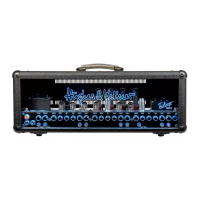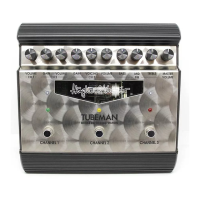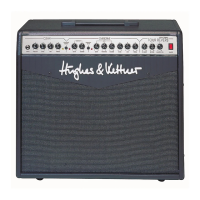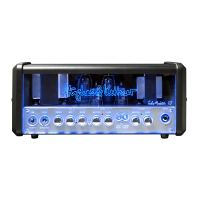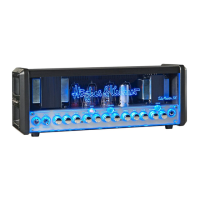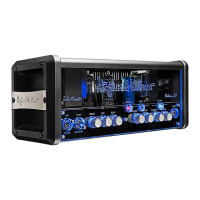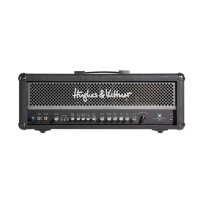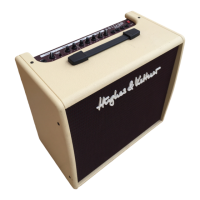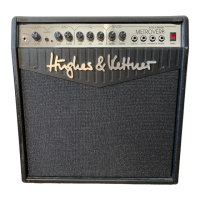LOOP never compromises the amp's sound quality.
NOTE: As a rule of thumb, the best method for using signal
processors is to set the output of the processor itself to
maximum effect (balance = 100%), and then mix the
processed signal with the original signal via the FX-MIX
control to avoid the sound degradation an effects device
might otherwise introduce.
Switch the FX LOOP button on the front panel to OFF if you
want to switch the FX LOOP via the STAGEBOARD or MIDI
commands.
Connecting signal processors:
- Connect the device's INPUT to the FX LOOP SEND jack
and its OUTPUT to the RETURN jack.
- Activate the FX LOOP via the FX LOOP button on the front
panel or the STAGEBOARD.
- Adapt the FX loop level to the signal processor's level, if
necessary. Press the -10 db button for effects devices like
stomp boxes that are designed for guitar signals. If the button
is not depressed, the signal level remains at standard line
level, appropriate for most rack-mounted multi-effects
processors.
- Adjust the relative volumes of the original and processed
signals via the FX MIX pot located on the front panel
(towards DRY = more original signal, towards WET = more
processed signal).
NOTE: Some signal processors cause phase cancellations
that are detrimental to the overall sound. If this is the case,
turn the FX control all the way to the right (WET). The effects
loop now operates as a conventional serial loop, i.e. the
volume relationship between the original and the processed
signal must be adjusted at the processor.
TIP 1: If you choose not to connect a signal processor or
effects device to the FX loop, you may connect another
instrument or audio source. When you use the RETURN
circuit as a second input channel in this way, the FX-MIX
knob becomes a balance control to determine the relative
volumes of the guitar signal and the other sound source.
TIP 2: Another option is open to you if you are not using a
signal processor. Use the loop, with nothing connected to it,
as a second master volume. Simply activate the FX loop and
dial in a separate master volume setting via the FX MIX pot
(to the left towards DRY = volume up, to the right towards
WET = volume down). Now use the FX LOOP on/off switch
to cut back and forth between the two master volumes.
3.0 STANDARD SETUP /
CABLE CONNECTIONS
4.0 TRIAMP OPERATION
4.1 CHANNEL SELECTION
The six basic sounds/channels of the TriAmp can be
accessed via DSS (Direct Sound Switching). Simply press the
appropriate CHANNEL SELECTOR switch.
This applies to the CHANNEL SELECTOR switches located
on the front panel as well as those on the STAGEBOARD.
You can also execute switching functions via MIDI using the
MSM 1 MIDI Module (refer to Section 4.4).
If you want to use an external MIDI switcher, you will need
to make an adapter cable that accesses the Stageboard jack,
wiring it according to the pin assignments shown in Diagram
5. Channel selection is executed via momentary contact; FX
LOOP activation is executed by switching, namely by
applying pin 8 to pin 5 (ground).
Stageboard jack pin assignments:
4.2 TRIAMP AND SIGNAL PROCESSORS
TriAmp is equipped with a parallel effects loop. The
processed signal is mixed with the internal preamp's original
signal in such a way that the original signal remains audible
even during the brief lags caused by multi-effects processor
switching. The FX-MIX knob controls the dry/wet mix.
The passive nature of the FX MIX guarantees that the original
signal is not sent through any solid-state circuitry. When the
FX LOOP is deactivated, the buffer stage for the effects side
is switched off via a relay, thereby ensuring that the FX
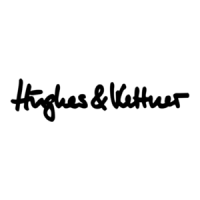
